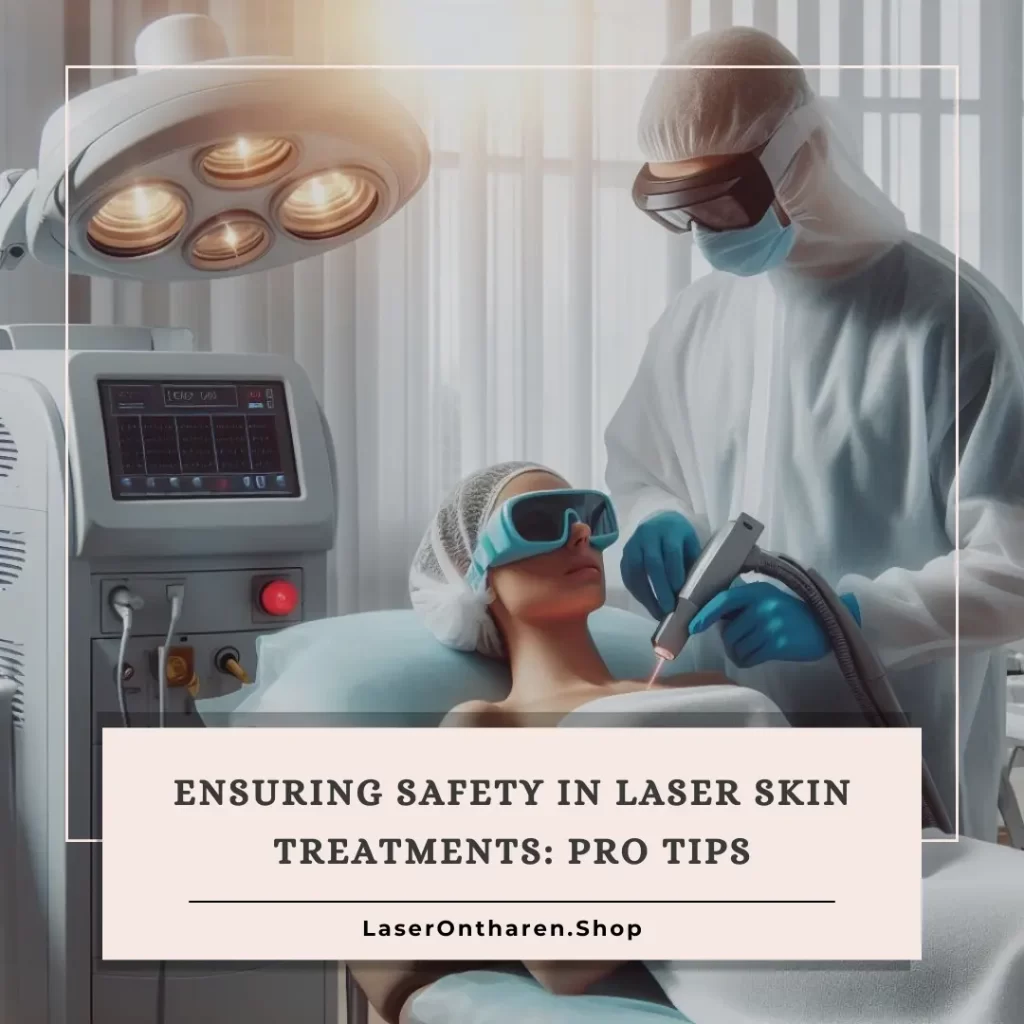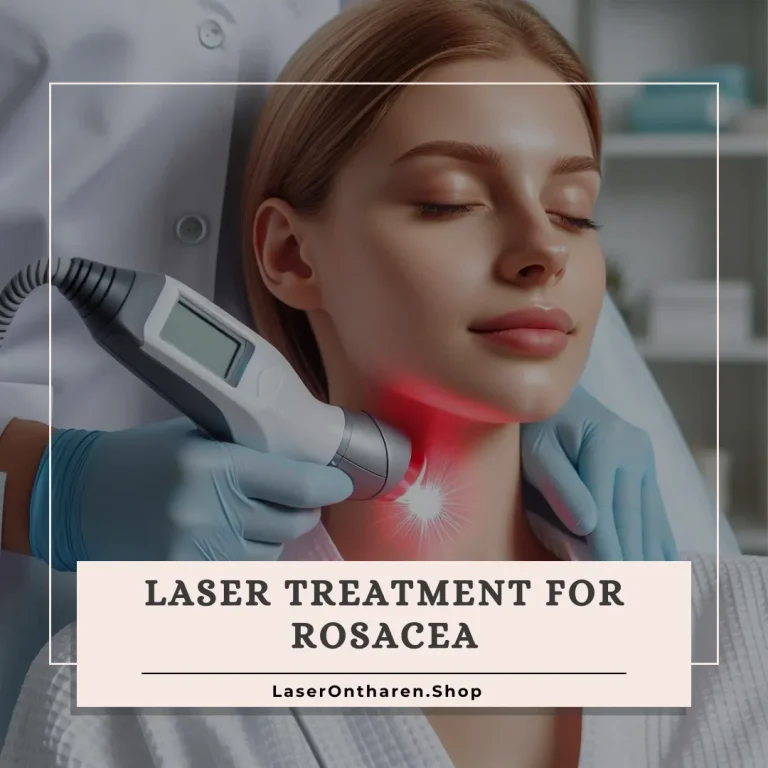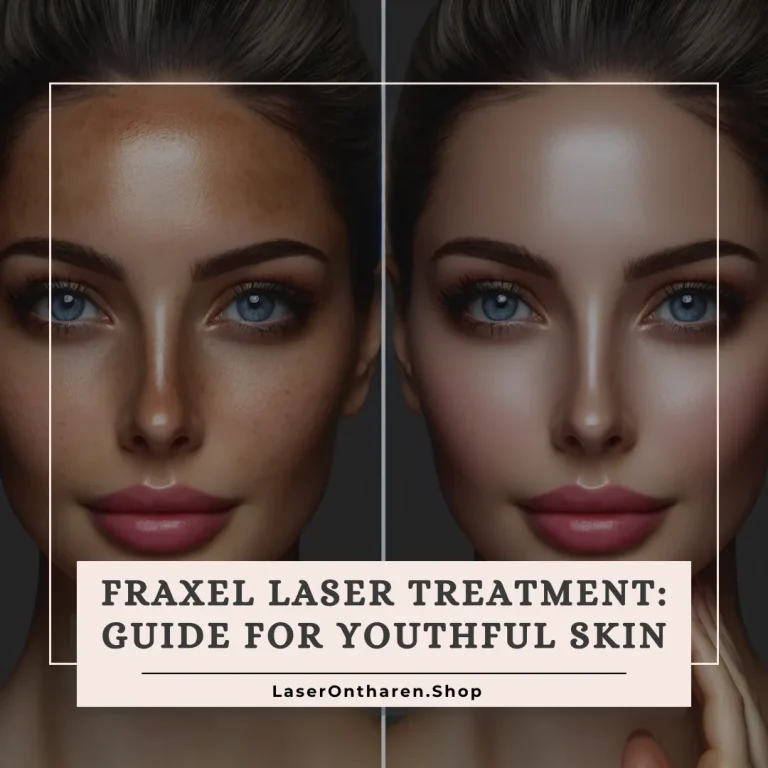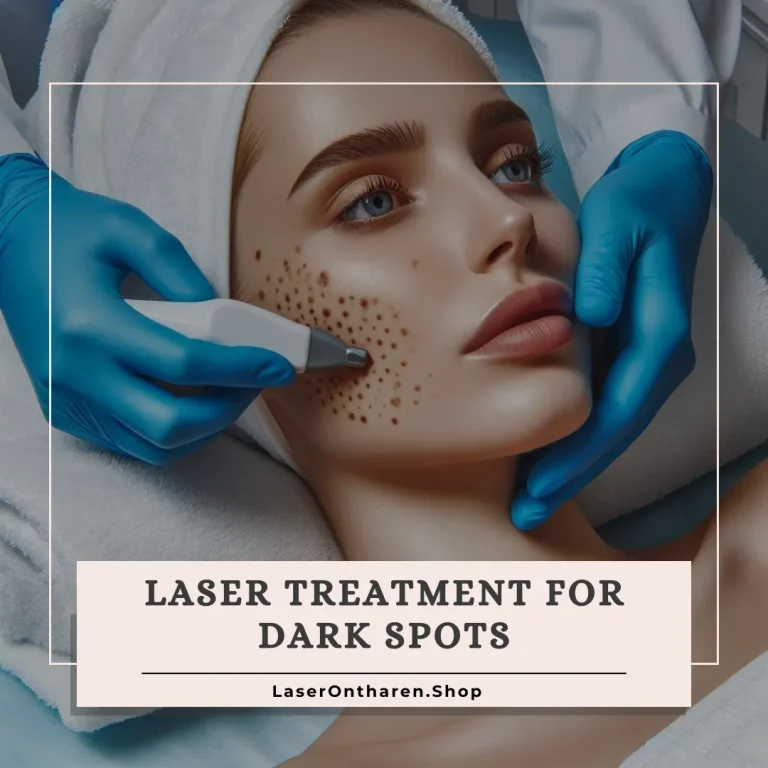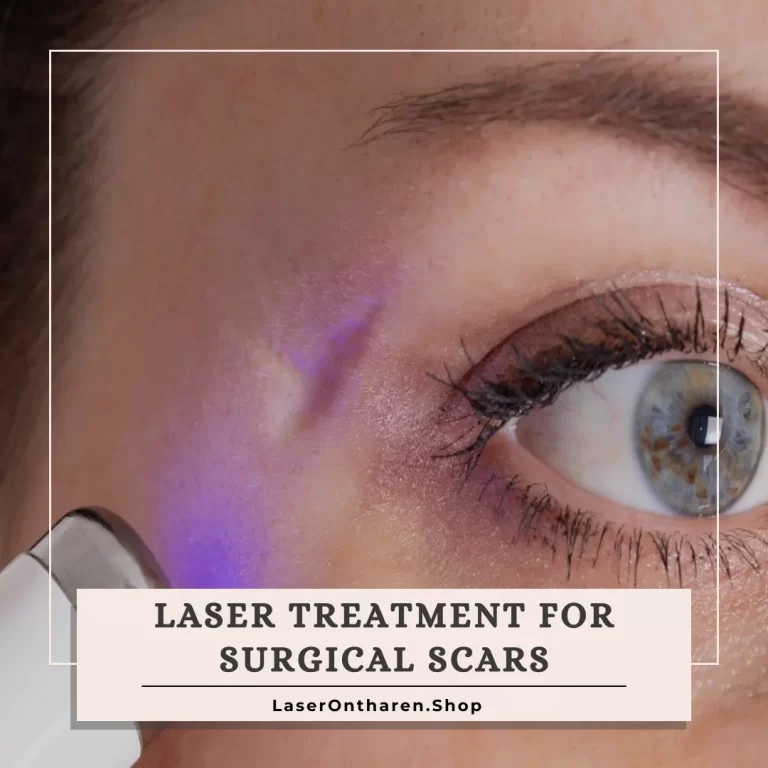Introduction
The Critical Importance of Safety in Laser Skin Treatments
The realm of aesthetic enhancements has been revolutionized by the advent of laser skin treatments, offering transformative solutions for a myriad of skin concerns.
However,
as the allure of these treatments grows, so too does the imperative of prioritizing safety.
The nature of laser treatments – utilizing concentrated light beams – calls for an uncompromising commitment to safety protocols to protect both the patient and the practitioner.
Ensuring Safety in Laser Skin Treatments is not just a matter of procedure; it’s a cornerstone of professional ethics and client care.
Navigating the Landscape of Laser Treatments with Safety in Mind
Laser skin treatments encompass a variety of procedures, each tailored to address specific skin issues.
Common types include:
- Laser Hair Removal: A sought-after procedure for long-term hair reduction, requiring careful consideration of skin and hair type to optimize safety and results.
- Skin Rejuvenation: Utilized for diminishing signs of aging, such as wrinkles and sun spots, where the precision and intensity of the laser must be meticulously managed.
- Acne and Scar Treatments: Leveraging laser technology to reduce acne scarring and active acne, a process that demands an understanding of skin sensitivity and healing responses.
In each of these applications, the safety of the procedure hinges on several critical factors:
the type of laser used, the skin condition being treated, and the individual characteristics of the patient’s skin.
Professionals must navigate these factors with a deep understanding of laser physics and skin physiology, ensuring a harmonious balance between efficacy and safety.
Basics of Safety in Laser Skin Treatments
Understanding Laser Technology and Its Interaction with Skin
Laser skin treatments utilize focused light beams for various cosmetic enhancements.
Essential to safety is a deep understanding of how these lasers interact with skin tissues.
Primarily, laser treatments involve converting light into heat, targeting specific skin concerns.
Key chromophores in the skin – blood, melanin, and water – play a vital role in how the skin absorbs and responds to laser light.
This absorption varies across the visible and infrared spectrum, influencing the outcome of the treatment.
Key Safety Considerations for Different Skin Types and Conditions
Safety in laser treatments is highly dependent on the individual’s skin type and condition.
Factors like
- skin color
- thickness
- and sensitivity
dictate how the skin will react to laser energy.
For instance,
darker skin tones may require different settings than lighter ones to prevent adverse reactions.
Understanding the depth of penetration for different wavelengths is crucial, especially in treatments like hair reduction where the target (hair follicle) lies beneath the skin surface.
In addition, safety extends beyond just the treatment process.
It involves ensuring that the treatment room is a controlled environment (the nominal hazard zone) where risks like direct or reflected laser beams and electrical hazards are managed effectively.
Practitioners should constantly assess the operating conditions – checking for the uniform effect of the laser beam on the skin, listening to the sound of the equipment, and feeling the temperature of the cooling handpiece.
Lastly,
preventing complications requires meticulous patient selection and screening, thorough knowledge of the laser device, and focus during the procedure to avoid operational errors and ensure uniform application of laser pulses.
Pre-Treatment Safety Protocols
Before undergoing or administering laser treatment, specific pre-treatment protocols are crucial for safety, particularly for clients with darker skin types.
Client Consultation and Skin Assessment
A thorough consultation and skin assessment are vital.
This includes understanding the client’s skin type, any underlying conditions, and treatment goals.
For darker skin types (V-VI), it’s recommended to pre-treat the skin with hydroquinone for about two weeks before each laser session.
This helps in minimizing the risk of post-inflammatory hyperpigmentation (PIH).
Avoiding the use of retinoids for at least a week prior to treatment is advisable.
Adjusting Laser Settings
It’s important to adjust laser settings for darker skin types.
Lower fluence (energy levels) and larger spot sizes are recommended.
Larger spot sizes allow deeper light penetration with reduced risk to the epidermis, while lower energy settings minimize the risk of PIH, burns, or scarring.
Due to these lighter settings, more treatment sessions may be necessary to achieve the desired outcome.
These pre-treatment steps are crucial in ensuring effective and safe laser treatment for all skin types, particularly for those with a higher risk of pigmentation issues.
In-Procedure Safety Measures
When conducting laser procedures, ensuring the safety of both the client and the practitioner is paramount.
Here are some key in-procedure safety measures to consider:
Critical Safety Measures During Laser Procedures
- Eye Protection:
It’s essential to wear the correct laser safety glasses throughout the entire procedure.
The glasses should match the laser being used, with the appropriate wavelength range and optical density measurements.
This is crucial as even low levels of laser radiation can cause permanent eye damage.
- Nominal Hazard Zone (NHZ) Management:
The NHZ is the area where the level of direct, reflected, or scattered radiation during normal operation exceeds the Maximum Permissible Exposure.
It’s typically considered to be within the treatment area or surgery room.
Managing this zone effectively is crucial for safety.
- Fire Safety Precautions:
Awareness of fire safety is important, especially regarding the types of fire extinguishers available and their locations.
Additionally,
specific considerations should be made for procedures involving the oral or laryngeal areas, such as using laser-resistant endotracheal tubes.
Handling the Equipment
Proper Storage and Maintenance: Ensuring that laser glasses and equipment are properly stored and maintained is vital.
Any damage to these items can compromise their effectiveness in protecting against laser radiation.
Training and Expertise: The personnel operating the laser must be properly trained and educated.
This includes knowing how to align the laser correctly and position the laser beam to minimize the risk of accidental exposure.
Managing Client Expectations
Clear Communication:
Before the procedure, it’s important to clearly communicate with the client about what the procedure entails, including potential risks and expected outcomes.
Consistent Monitoring:
Throughout the procedure, constant monitoring of both the client and the equipment is necessary to ensure everything is functioning as it should and to respond quickly to any unexpected events.
By following these in-procedure safety measures and handling the equipment with care, practitioners can significantly reduce the risks associated with laser treatments and manage client expectations effectively.
For more detailed information on these safety measures, you can refer to Universal Medical Inc. Blog and Vanderbilt University Medical Center.
Post-Treatment Care and Safety
After laser skin treatment, proper post-treatment care is crucial to minimize risks and side effects, and to ensure the best possible results.
Guidelines for Post-Treatment Care
- Skin Sensitivity and Redness: It’s common for the treated area to feel like a sunburn for a few hours after the procedure.
Redness and a sensation akin to epidermal bleeding may also occur for up to a week. - Cleansing and Bathing: Clients should wait at least 12 hours before washing the treated area and use a mild cleanser like Cetaphil.
Hot water, strenuous exercise, and massages should be avoided for 2-3 days post-treatment. - Hydration: Keeping the skin well-moisturized is important.
Clients should apply recommended ointments like Epione’s Super Healing Ointment or Aquaphor several times a day.
Other moisturizers or liquid sunscreens should be avoided for at least five days. - Sun Exposure: Direct sun exposure and tanning beds should be avoided for 1-2 months post-treatment.
This helps prevent hyperpigmentation and other skin damage.
If necessary, powdered mineral makeup can be used as a sunscreen during the healing process. - Makeup Usage: Makeup should not be used for at least five days post-treatment.
If makeup is essential, it’s advisable to use new products to reduce the risk of infection. - Medications and Smoking: Follow any specific medication instructions provided by the physician.
Smoking should be avoided for at least 7 days after treatment as it can prolong healing. - Other Procedures: Activities like tweezing, waxing, bleaching, or chemical peels should be avoided during the healing process.
Managing Client Follow-Up and Addressing Concerns
- Scheduled Follow-Up: Regular follow-up appointments are essential to monitor the healing process and to address any concerns that may arise.
- Observing Side Effects: Clients should be informed about potential short-term side effects such as discomfort, redness, swelling, and changes in skin texture.
Immediate medical attention should be sought if these symptoms persist or worsen. - Education on Skin Care: Clients should be educated about the importance of ongoing skin care, including the use of sunscreen and gentle skincare products.
- Post-Treatment Instructions: Providing detailed post-treatment instructions can help in reducing complications and improving the overall outcome of the treatment.
By adhering to these post-treatment care guidelines, clients can ensure a safe and effective recovery from their laser skin treatment.
For more comprehensive information and specific instructions related to different types of laser treatments, clients can refer to resources like:
Training and Certification in Laser Safety
Professional training and certification in laser safety are critical components for ensuring safe and effective laser treatments.
Importance of Professional Training and Certification
- Understanding Laser Classes and Safety Protocols:
Different laser classes have specific safety requirements.
Class 3B and Class 4 lasers, commonly used in medical and industrial settings, require strict adherence to safety protocols.
Training ensures an understanding of these classifications and necessary safety measures, such as beam blocks and appropriate eyewear.
- Role of a Laser Safety Officer (LSO):
An LSO oversees laser safety in a facility, ensuring training relevancy, assisting in eyewear selection, and reviewing hazards.
LSOs play a crucial role, even in part-time capacities.
- Compliance with Standards:
Training and certification ensure adherence to standards by organizations like ANSI, designed to mitigate risks in laser usage.
Resources and Recommendations for Training Programs
- Laser Institute of America (LIA):
Offers comprehensive training for medical and non-medical laser safety.
Training covers critical aspects of laser operation and safety standards.
- On-the-Job Training and Mentoring:
Essential for practical understanding.
Involves orientation to specific laser systems and safety protocols tailored to the facility.
- Laser Safety Courses:
Include Industrial Laser Safety Officer Training and Laser Safety Officer with Hazard Analysis Training.
Tailored to different professional needs, covering a range of topics.
- Certification Programs:
Go beyond training to prove proficiency.
Involve demonstrating understanding and application of safety protocols.
Professional training and certification are indispensable for safe and effective laser operation and essential for the well-being of practitioners and clients.
Choosing Safe and Reliable Laser Equipment
When selecting laser equipment, safety and reliability are paramount.
Here are some guidelines to help you choose the best laser devices for your needs:
Tips for Selecting Safe Laser Equipment
Understand Laser Types and Applications: Different types of lasers are suited for various applications.
It’s essential to choose a laser that matches your specific needs, whether for industrial, medical, or aesthetic purposes.
Consider the Laser Class: Lasers are classified based on their potential for causing harm.
Class 1 is considered completely safe, while Class 4 lasers are highly hazardous and can cause skin burns and eye damage.
Knowing the class of the laser helps you understand the safety measures required.
Deal Breakers and Throughput Needs: Identify any deal breakers in terms of byproducts or defects, and understand your throughput requirements.
This will guide you in selecting a laser that meets your operational standards and efficiency needs.
Part or Material Tolerances: Consider the tolerances of the materials you’ll be using.
Variations in material properties can affect the laser’s performance and the quality of the output.
Research Laser Prior Arts: Look into the manufacturer’s history and past applications.
This can give you an idea of their expertise and the reliability of their equipment.
Recommended Laser Devices from Laserontharen.shop
- High Power Diode Laser Ice Pro-A: Ideal for laser hair removal, offering efficient and comfortable treatments.
- High Power Diode Ice Laser Maxx Double Lever: A versatile device for effective hair removal, suitable for various skin types.
- Body Slimming V-Shape: Designed for body contouring and slimming, using advanced laser technology.
- EMS Sculpting: Utilizes electromagnetic technology for muscle toning and body sculpting.
- CO2 Fractional Laser: Ideal for skin resurfacing, scar reduction, and rejuvenation treatments.
Ensuring Safety and Compliance
Follow Manufacturer’s Instructions: Always adhere to the usage guidelines provided by the manufacturer.
This includes understanding the operational settings and safety features of the device.
Training and Certification: Ensure that the personnel using these devices are properly trained and certified.
Understanding the operation and safety protocols is crucial in preventing accidents and ensuring effective treatments.
Regular Maintenance: Keep the equipment well-maintained.
Regular checks and servicing can prevent malfunctions and ensure the longevity and reliability of the devices.
By following these guidelines and selecting from reliable sources such as Laser Ontharen Shop, you can ensure that you are choosing safe and efficient laser equipment for your needs.
Remember, the key to successful laser treatments lies in the combination of high-quality equipment, proper training, and adherence to safety protocols.
